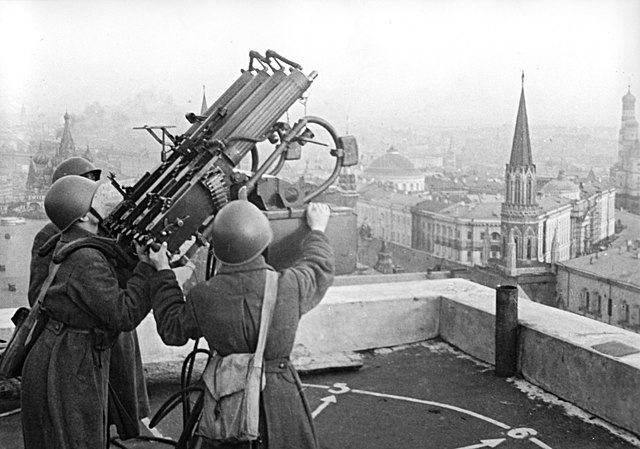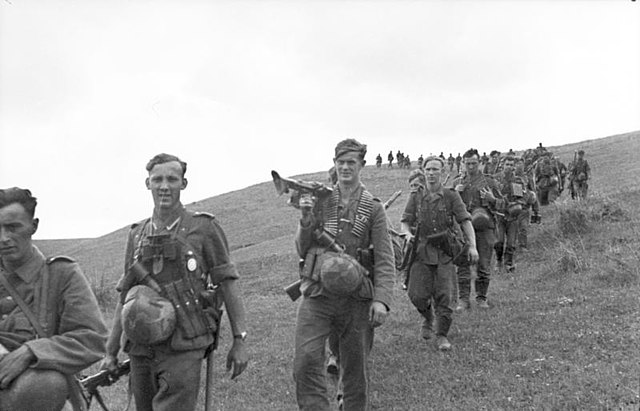The Battle of Moscow was a military campaign that consisted of two periods of strategically significant fighting on a 600 km (370 mi) sector of the Eastern Front during World War II, between September 1941 and January 1942. The Soviet defensive effort frustrated Hitler's attack on Moscow, the capital and largest city of the Soviet Union. Moscow was one of the primary military and political objectives for Axis forces in their invasion of the Soviet Union.
Soviet anti-aircraft gunners on the roof of the Hotel Moskva
German armored column advances on the Moscow front, October 1941.
Moscow women dig anti-tank trenches around their city in 1941.
Anti-tank obstacles in a Moscow street, October 1941
Eastern Front (World War II)
The Eastern Front was a theatre of World War II fought between the European Axis powers and Allies, including the Soviet Union (USSR) and Poland. It encompassed Central Europe, Eastern Europe, Northeast Europe (Baltics), and Southeast Europe (Balkans), and lasted from 22 June 1941 to 9 May 1945. Of the estimated 70–85 million deaths attributed to World War II, around 30 million occurred on the Eastern Front, including 9 million children. The Eastern Front was decisive in determining the outcome in the European theatre of operations in World War II, eventually serving as the main reason for the defeat of Nazi Germany and the Axis nations. It is noted by historian Geoffrey Roberts that "More than 80 percent of all combat during the Second World War took place on the Eastern Front".
Semyon Timoshenko and Georgy Zhukov in 1940
German soldiers in a Panzer III tank; Kalmyk steppe north of Stalingrad, September 1942
German infantry in Russia, June 1943
Soviet children during a German air raid in the first days of the war, June 1941, by RIA Novosti archive








